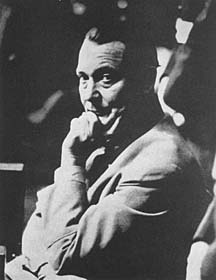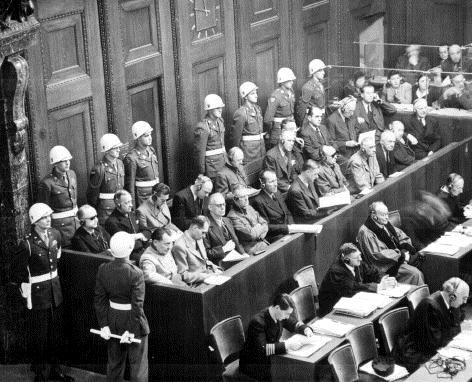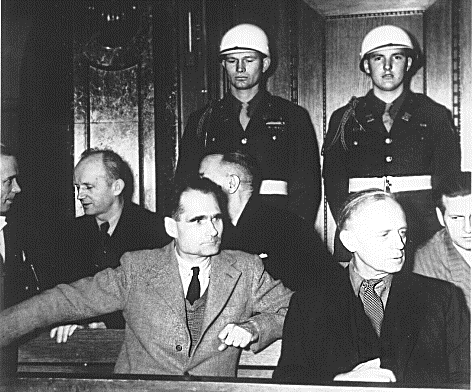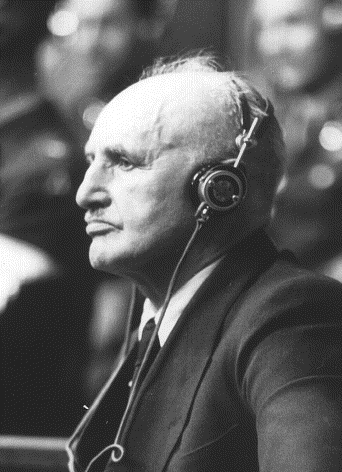The Defense
After the prosecution’s case was made the attorneys for the Nazi defendants began the process of defending their clients. Each defendant was tried separately and many took the stand in an attempt to preserve his life.
The defense made the argument that their clients were following the orders of those who were higher ranking and that the laws their clients were being tried under were ex post facto, or created after the actions and events took place.
|
The Defendants in the Dock Photo from usf |
This defense did not hold up. Most of the men being tried were high-ranking Nazi officials or were ranking members of the German armed forces. Hermann Goering was often referred to as the Number 2 Nazi. Only Hitler had more power than he did. These men were not forced to follow the orders of more powerful Nazis because in many cases they were the ones giving the orders. The argument of ex post facto laws was countered by the Kellogg-Briand Pact, which Germany had signed in 1928. Germany was considered to be under this international law when war was declared in 1939. In addition, on May 30, 1924 German courts had declared the Nazi Party illegal and classified it as a criminal organization.
|
Nuremberg Prison Photo from umkc
|
On Monday September 30, 1946 the Tribunal ruled that the Leadership Corps of the Nazi Party, the SS and the SD, as well as the Gestapo, were criminal organizations created for the purpose of waging war. The Reich Cabinet, SA, and the General Staff and High Command of the German Armed Forces were not “found guilty” by the Tribunal. The defendants were also given their sentences. Those who had received the death penalty were hanged on October 16, 1946.
Justice Jackson never sought the death penalty for the defendants. He was opposed to it in regular practice and never asked for the Nazi war criminals to be put to death in either his opening or closing statements. He did, however, support the decision in the case of the Nuremberg Trials. When the trial was over Justice Jackson turn over his position as Chief Prosecutor to Telford Taylor. Taylor would serve in the subsequent trials.
|
Hess(left, front row), Ribbentrop(right, front row)
Photo from usf |
Although the expressed purpose of the Nuremberg Trials and the International Military Tribunal was to give the Nazi war criminals a fair trial many of the IMT’s critics, and the defense counsels, did not believe that it dispensed true justice. It was accused of being too limited in scope, nothing was mentioned about the extermination of Jewish people, too lax, some of the defendants were acquitted, too harsh, the majority were put to death, and biased, only the Allies participated. This could be considered a legitimate argument for a number of reasons. Many maintained that the IMT was not really international because only the Allies and France participated in the prosecution. In addition, the IMT was accused of being little more than victor’s justice and its goal was always to convict as many of the Nazis as possible. The prosecution also did not allow the defense to mention “crimes against humanity” that the Allies were responsible for, such as the firebombing of Hamburg, which killed thousands of civilians. Incidents, like the alleged Katyn Massacre of Polish officers, were simply not allowed to be mentioned in connection with the case.
|
Julius Streicher on the Witness Stand Photo from usf |
Web page by Amy Suelzle
Revised 12/9/02




